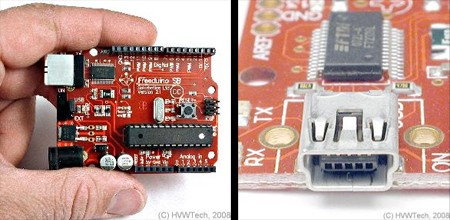
Don’t feel like shelling out $5 for a fancy factory made calculator that won’t even do binary math? [Jeff] decided to prove his mastery of gates and his disdain for base 10 by building a binary calculator using XOR, AND, and OR chips. Calculations can be input in two ways: through digital logic headers or by three banks of DIP switches used to enter the operator and the two operands. Although limited to addition and subtraction, this is a great way to make sure you really understand digital logic. Take a look at the rough design schematics in his album. The design is modular so if you have one of each gate and a few LEDs sitting around you can give this a whirl.













